High Content Assays
High content image-based analysis represents an effective strategy to study disease-relevant processes in the complex
physiological environment of the cells. Independently of the disease area (neurobiology, oncology, immunology, rare disease, metabolism, etc.), this approach allows validation of the relevant mechanism of action of drugs and/or targets through extraction of the rich information present in biological images at the cellular and subcellular levels.
Our high-content platforms include several assays investigating, in automated and miniaturized format, the most significant functions linked to human pathophysiology, such as autophagy, mis-localization, DNA damage, pathological aggregates and several others. Available off-the-shelf assays can be accessed and customized to specific needs and new assays can also be generated upon request for screening purposes.
Our high content assay platform
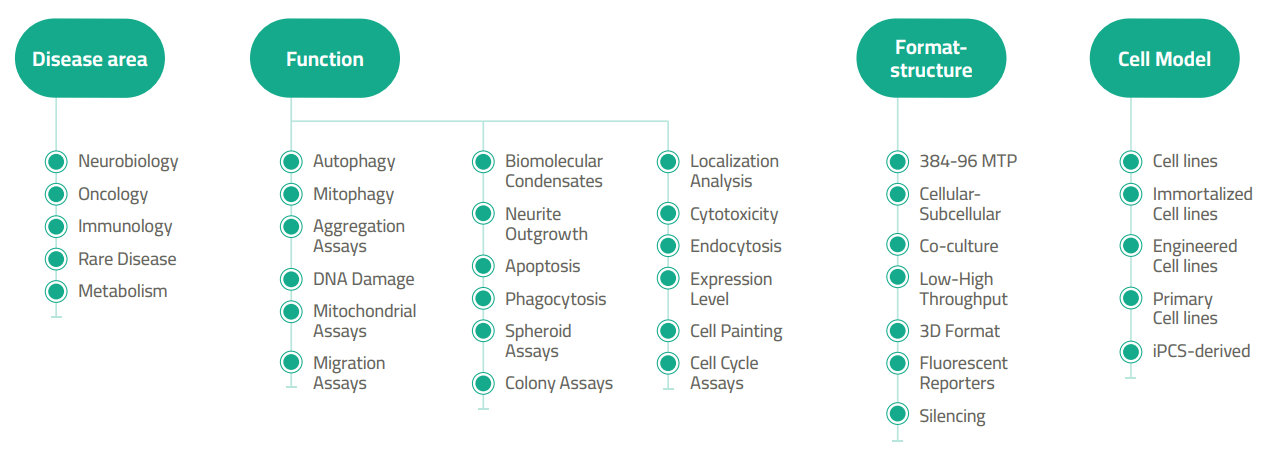
Cell-based models
High-content screening at Axxam can be performed on immortalized cell lines mimicking disease pathways, as well as on
more physiological models, such as primary cell cultures and induced pluripotent stem (iPS)-derived cells accessible for example through trusted scientific partners (including Neuro-Zone Srl and FUJIFILM Cellular Dynamics, Inc.).
Our platforms include relevant cell models for neurodegeneration diseases (such as Alzheimer’s and Parkinson’s), neuropathic pain, inflammation diseases, degradation pathways and many more. Disease-relevant models can also be tailored thanks to our state-of-the-art gene editing tools and reporter systems generation.
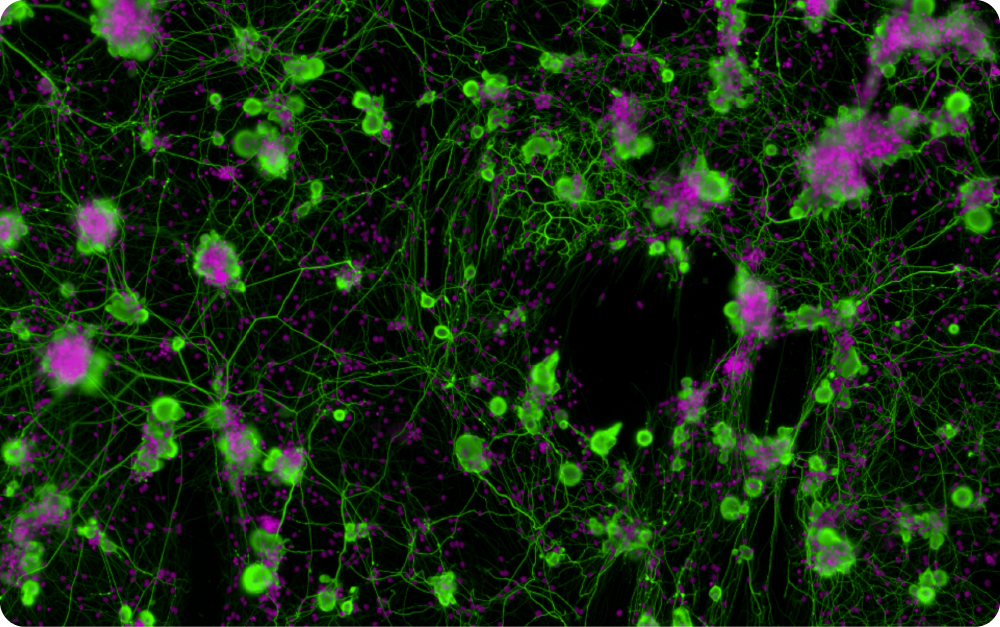
Neurons (rat DRG cells) and neurites stained with β-III Tubulin (Green LUT) in co-culture with glial cells (Pink LUT). 20X Magnification
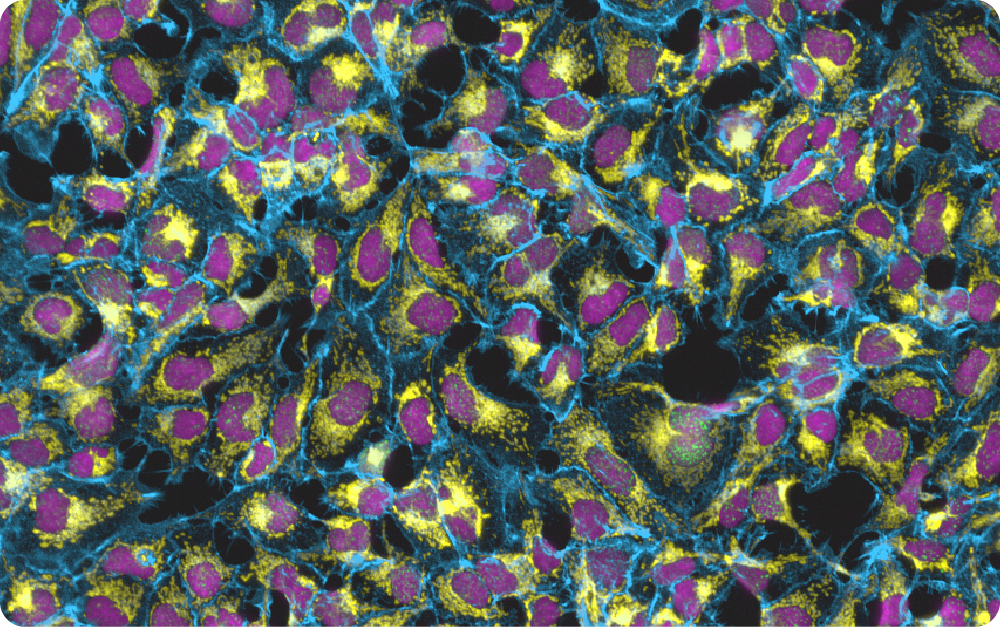
CellPainting of HeK293 cells treated with a DNA damaging agent (Etoposide). Mitochondria are stained using an anti TOM20 antibody (yellow LUT). The membrane is stained with phalloidin (blue LUT). Nuclei are labelled with DAPI (pink LUT) and γH2AX DNA damage foci are represented in green LUT. 20X Magnification
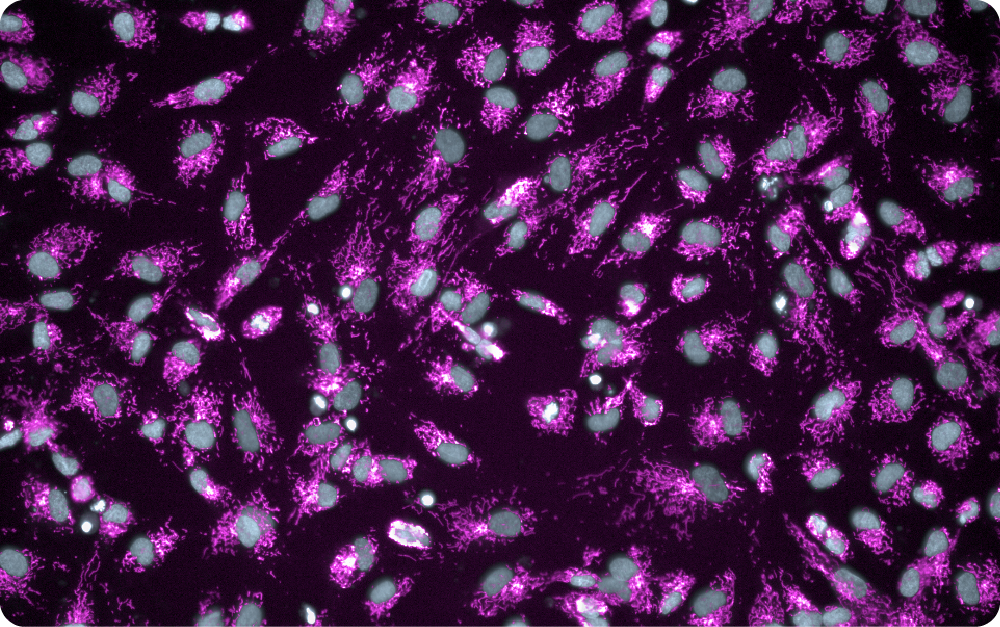
HeK293 stained with a dye labelling mitochondrion (pink LUT) and nuclei (gray LUT).
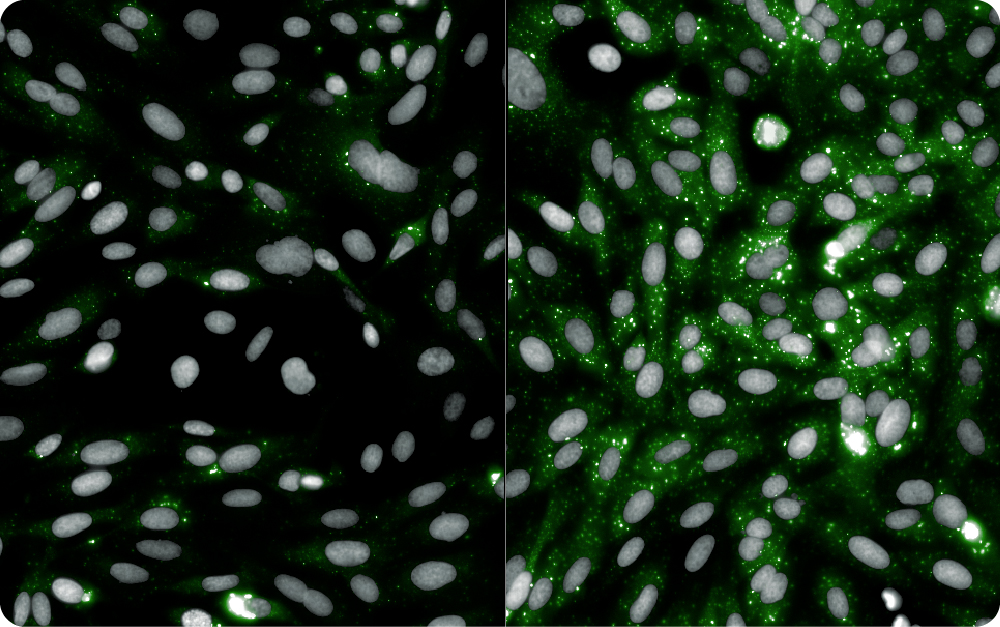
Bimolecular condensates formation by light stimulation in U2OS cancer cells. 20X Magnification

Fraction of nuclei of Human Osteosarcoma SJSA cells showing high level of Dna damage (pink Lut) upon toxic agent treatment

Human Osteosarcoma SJSA cells spheroids of controlled size in 96-well format. 10X Magnification
Related Content
Our image-based assays
Check below the phenotypic assays you can get access to at Axxam and contact us to find more information:
Aggregation Assays – Apoptosis – Autophagy – Biomolecular Condensates – Cell Cycle Assays – Cell Painting – Colony Assays – Cytotoxicity – DNA Damage – Endocytosis – Expression Level – Localization Analysis – Migration Assays – Mitochondrial Assays – Mitophagy – Neurite Outgrowth – Phagocytosis – Spheroid Assays


